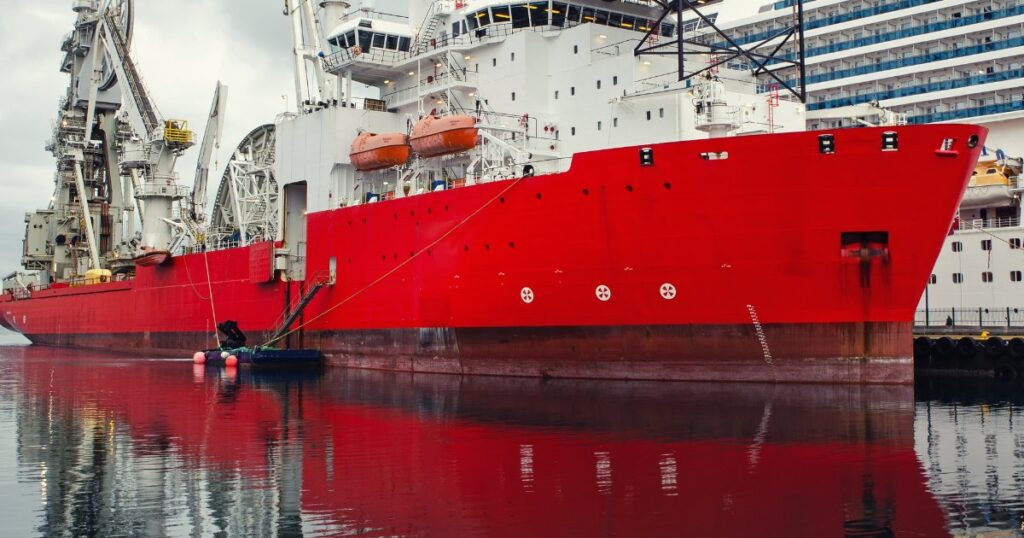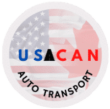What happens to auto supply chain shipping when tariff policies keep shifting across borders? For manufacturers, carriers, and even consumers, the answer isn’t always simple. What used to be a predictable logistics flow—from factory floor to dealership—is now being rerouted, delayed, or restructured because of tariff volatility.
As the automotive industry becomes more globalized, tariff decisions in Washington, Ottawa, Beijing, and Brussels ripple across borders with lightning speed. Whether it’s steel tariffs, retaliatory duties, or shifting trade agreements, every policy change creates a new challenge in auto supply chain shipping. Companies that once relied on fixed shipping lanes and lean inventories now have to be more agile than ever.
Let’s explore how the unpredictable nature of modern tariffs is reshaping vehicle logistics from the factory floor to the North American border—and how companies like US Canada Auto Transport are helping clients adjust and thrive in the face of constant change.
The New Reality of Auto Supply Chain Shipping
In a perfect world, supply chain shipping would follow a seamless path from manufacturing plants to final delivery. But today’s landscape looks far different. Here’s how:
- Tariff Instability Impacts Contracts: Automakers and suppliers now find it harder to negotiate long-term shipping contracts due to the unpredictability of tariff announcements. Carriers often include tariff contingencies in quotes to stay flexible.
- Increased Reliance on Multimodal Solutions: To avoid costly ports or congested routes affected by trade policies, more logistics planners are combining road, rail, and sea transport. This diversification reduces exposure to one specific tariff-related bottleneck.
- Longer Delivery Timelines: Adjusting for customs inspections, extra documentation, and rerouting due to changing tariff rules means auto shipments often take longer to reach dealerships or resellers.
- Dynamic Inventory Planning: Automakers are no longer shipping “just in time” but rather “just in case.” Strategic warehousing in tariff-neutral zones is being used to buffer delays.
- Cost Pass-Throughs to Consumers: Rising shipping costs caused by tariff spikes often get passed down, inflating sticker prices at the dealership level.
- Border Brokerage Services in High Demand: With the rise in cross-border complexities, more companies are hiring third-party services like US Canada Auto Transport to ensure compliance and mitigate risk.
Key Ways Tariff Volatility Is Forcing Shipping Changes

Auto supply chain shipping must now respond quickly to stay competitive and compliant. Here’s how the industry is evolving in response to ongoing tariff shifts:
1. Route Optimization Becomes Strategic
Auto transporters are avoiding certain ports of entry entirely due to increased customs hold times and new documentation requirements. Instead, they’re using alternative border crossings or inland hubs to reduce congestion and cost.
2. Rise of Tariff-Engine Software Integration
Shippers are integrating tariff-classification and duty-calculation tools directly into their supply chain platforms. These digital tools allow companies to instantly assess the impact of new tariffs before shipments leave the factory.
3. Re-Negotiating Supplier Terms
OEMs (original equipment manufacturers) are reworking agreements with overseas suppliers, factoring in variable shipping rates caused by tariffs. Flexible contracts help mitigate future risks without straining supplier relationships.
4. Higher Emphasis on Domestic Sourcing
Some auto manufacturers are shifting portions of their supply chain back to North America to avoid international tariffs. While not always cheaper, this strategy offers stability and speed.
5. Strategic Cross-Docking Operations
Border-adjacent cross-docking facilities are seeing increased use. These allow for the rapid transfer of vehicle components or whole units from international trailers to domestic ones, reducing tariff exposure time.
6. Contingency Planning and Scenario Testing
Forward-thinking logistics teams now run “what-if” simulations to test how sudden tariff changes would affect their routes, customs duties, and delivery timelines. US Canada Auto Transport offers this planning support for shippers caught in regulatory limbo.
What Logistics Professionals Are Doing Differently Now

To stay ahead, auto shippers are rethinking how they plan and execute every leg of the journey. Here are six shifts occurring within logistics departments:
1. Prioritizing Trade Compliance Audits
Regular compliance checks are now part of quarterly shipping reviews. Companies are allocating budget toward ensuring up-to-date customs documentation and HS code accuracy.
2. Engaging in Regional Free Trade Zones
Shipping into free trade zones—like those near U.S. borders—helps avoid duty delays and accelerates throughput. Vehicles or parts stored there can be re-exported or released into local markets when tariffs stabilize.
3. Leveraging Data for Route Decisions
Shippers are using real-time data to select routes with the lowest tariff impact, not just the shortest transit times. This tech-first approach is particularly beneficial for EV and luxury vehicle shipments.
4. Incorporating Buffer Stock in Warehouses
To avoid running out of high-demand vehicles during delays, more automakers are keeping buffer inventory closer to customer markets. These buffer zones are often supported by regional carriers like US Canada Auto Transport.
5. Strengthening Carrier Partnerships
Instead of shopping for the lowest price, many logistics managers are forming long-term relationships with experienced transporters. Trusted partners offer agility and insight when trade policy becomes uncertain.
6. Training Staff on Tariff Literacy
From shipping clerks to logistics VPs, staff are being educated on tariff implications and how they affect supply chain decisions. Knowing how to interpret trade announcements helps avoid shipping errors.
Connecting Global Happenings to Local Outcomes
It’s important to note that tariff volatility isn’t just a local issue. Global events—from EU emissions taxes to China’s export restrictions—have cascading effects on North American supply chains. For example:
- U.S. steel and aluminum tariffs impacted the cost of chassis components sourced from Mexico.
- Canada’s retaliation tariffs added extra cost layers for U.S.-bound luxury vehicles assembled in Ontario.
- Brexit-related trade complications changed the way European parts reach factories in North America.
In each case, the result is the same: delays, route rerouting, and increased reliance on nimble partners like US Canada Auto Transport, which has helped clients adapt to every new policy wave.
Planning Smartly as Tariff Rules Keep Changing
Smart logistics planning now includes preemptive strategies to handle potential policy shifts. Shippers are not waiting for government announcements—they’re preparing for the unknown:
- Setting up alternate delivery corridors.
- Working with customs brokers familiar with evolving trade zones.
- Building in time for tariff recalculations.
- Partnering with experienced cross-border shippers who offer transparency and up-to-date logistics intelligence.
US Canada Auto Transport remains committed to helping clients prepare for future volatility with real-time tracking, route optimization, and compliance-first shipping practices.
Final Thoughts
Are you ready to future-proof your vehicle logistics despite today’s unpredictable tariff environment? With shipping costs, delivery timelines, and route choices in constant flux, auto supply chain shipping now demands a strategic, tech-savvy, and agile approach.By staying informed and aligned with experienced cross-border transporters like US Canada Auto Transport, you can keep your auto shipments moving—even when the rules of the road keep changing.


